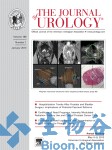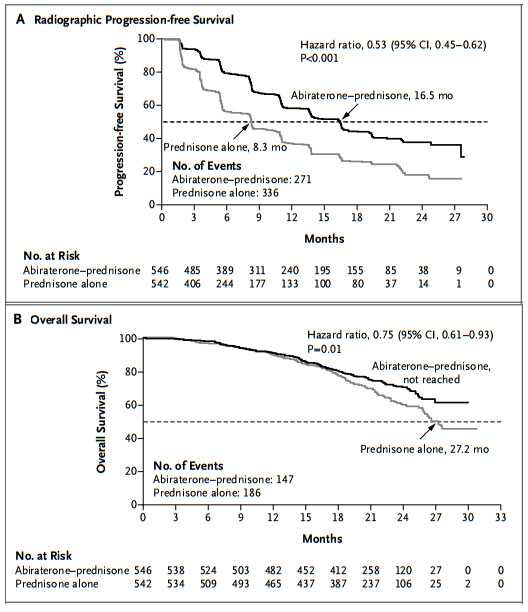J Urol:新的诊断创新可改进医生检测前列腺癌的方式
2013-01-04 J Urol zyj0630
虽然已有大量前列腺癌检查和治疗方法,专家和患者们仍不断面临着预测疾病发生过程和选择最佳治疗方法的挑战。现在有两项诊断创新—PCA3尿液检测和一种靶向性更强的前列腺穿刺活检,可以改进医生诊断前列腺癌的方式,以及随后患者选择治疗的方式。 现有前列腺癌检测技术均有局限性。血液前列腺特异性抗原(prostate-specific antigen, PSA)检测可显示潜在前列腺癌,但不能预测癌症的侵袭类型
虽然已有大量前列腺癌检查和治疗方法,专家和患者们仍不断面临着预测疾病发生过程和选择最佳治疗方法的挑战。现在有两项诊断创新—PCA3尿液检测和一种靶向性更强的前列腺穿刺活检,可以改进医生诊断前列腺癌的方式,以及随后患者选择治疗的方式。
现有前列腺癌检测技术均有局限性。血液前列腺特异性抗原(prostate-specific antigen, PSA)检测可显示潜在前列腺癌,但不能预测癌症的侵袭类型。前列腺穿刺活检可证实前列腺癌诊断,但组织检查在前列腺大小和位置方面具有挑战性,并可能导致肿瘤的漏检。前列腺癌治疗专家David Samadi博士依据前述两项检查来建议和执行他的Samadi修饰改进的机器人前列腺摘除手术(Samadi Modified Advanced Robotic Technique,SMART),但他同意前列腺癌检测技术可以被提高。他说,像这些前列腺癌检测的创新将不断提高早期诊断和干预带来的拯救生命的益处。
什么是PCA3?
PCA3,是前列腺癌基因3的缩写,是一项以基因为基础的尿液检测,确信它可以更准确地预测前列腺癌的存在和它的未来发展。与PSA水平不同,PCA3不受诸如良性前列腺增生(benign prostatic hyperplasia, BPH)等其它前列腺状况的影响,因此结果更可靠。
Samadi博士解释道,PCA3评分有两个可行的应用。如果我们在前列腺活检前知道一个患者的PCA3水平升高,那么我们可以更加确定对他进行活检的必要性。在活检以后,这项检测可以帮助评估治疗疾病的紧急性。这两方面的应用都可以使患者更安心地评估治疗选择,特别是机器人前列腺摘除手术。
靶向性更强的前列腺穿刺活检
加州大学洛杉矶分校(University of California Los Angeles, UCLA)研究人员在本月的《泌尿外科杂志》(Journal of Urology)上发表了一项影像学指导下的前列腺穿刺活检研究结果http://www.jurology.com/article/S0022-5347(12)04714-3/abstract。为了获得更精确的活检结果,他们将磁共振成像与超声成像能力相结合,使用新的前列腺“地图”,研究中的穿刺活检技术在171名参与者中检出了53%的前列腺癌患者。
Samadi博士解释说,前列腺活检产生的结果是不确定的。但是通过两种成像技术重叠加强的新技术可以更准确地收集到前列腺组织,与机器人外科手术中使用的机器增强可视性非常相似。这项新的靶向技术反映了机器提供的改进,可能会产生同等的积极效果。
与前列腺癌相关的拓展阅读:
- Radiother Oncol:膀胱充盈增加局部高危前列腺癌患者盆腔放疗后的急性毒性反应
- JNCI :质子放射治疗可以将前列腺癌患者的副作用降到最低水平
- NEJM:阿比特龙可使早期前列腺癌患者有显著获益
- 上海:20年间前列腺癌发病率翻了12倍多
- Science:科学家揪出前列腺癌罪魁祸首 更多信息请点击:有关前列腺癌更多资讯

doi:10.1016/j.juro.2012.08.095
PMC:
PMID:
Geoffrey A. Sonn Shyam Natarajan Daniel J.A. Margolis , Malu MacAiran Patricia Lieu Jiaoti Huang , Frederick J. Dorey , Leonard S. Marks
Purpose Targeted biopsy of lesions identified on magnetic resonance imaging may enhance the detection of clinically relevant prostate cancers. We evaluated prostate cancer detection rates in 171 consecutive men using magnetic resonance ultrasound fusion prostate biopsy. Materials and Methods Subjects underwent targeted biopsy for active surveillance (106) or persistently increased prostate specific antigen but negative prior conventional biopsy (65). Before biopsy, each man underwent multiparametric magnetic resonance imaging at 3.0 Tesla. Lesions on magnetic resonance imaging were outlined in 3 dimensions and assigned increasing cancer suspicion levels (image grade 1 to 5) by a uroradiologist. A biopsy tracking system was used to fuse the stored magnetic resonance imaging with real-time ultrasound, generating a 3-dimensional prostate model on the fly. Working from the 3-dimensional model, transrectal biopsy of target lesions and 12 systematic biopsies were performed with the patient under local anesthesia in the clinic. Results A total of 171 subjects (median age 65 years) underwent targeted biopsy. At biopsy, median prostate specific antigen was 4.9 ng/ml and prostate volume was 48 cc. A targeted biopsy was 3 times more likely to identify cancer than a systematic biopsy (21% vs 7%). Prostate cancer was found in 53% of men, 38% of whom had Gleason grade 7 or greater cancer. Of the men with Gleason 7 or greater cancer 38% had disease detected only on targeted biopsies. Targeted biopsy findings correlated with level of suspicion on magnetic resonance imaging. Of 16 men 15 (94%) with an image grade 5 target (highest suspicion) had prostate cancer, including 7 with Gleason 7 or greater cancer. Conclusions Prostate lesions identified on magnetic resonance imaging can be accurately targeted using magnetic resonance ultrasound fusion biopsy by a urologist in clinic. Biopsy findings correlate with level of suspicion on magnetic resonance imaging.
(责任编辑:haozongdi)
分享到:本网站所有内容来源注明为“梅斯医学”或“MedSci原创”的文字、图片和音视频资料,版权均属于梅斯医学所有。非经授权,任何媒体、网站或个人不得转载,授权转载时须注明来源为“梅斯医学”。其它来源的文章系转载文章,或“梅斯号”自媒体发布的文章,仅系出于传递更多信息之目的,本站仅负责审核内容合规,其内容不代表本站立场,本站不负责内容的准确性和版权。如果存在侵权、或不希望被转载的媒体或个人可与我们联系,我们将立即进行删除处理。
在此留言














#创新#
56